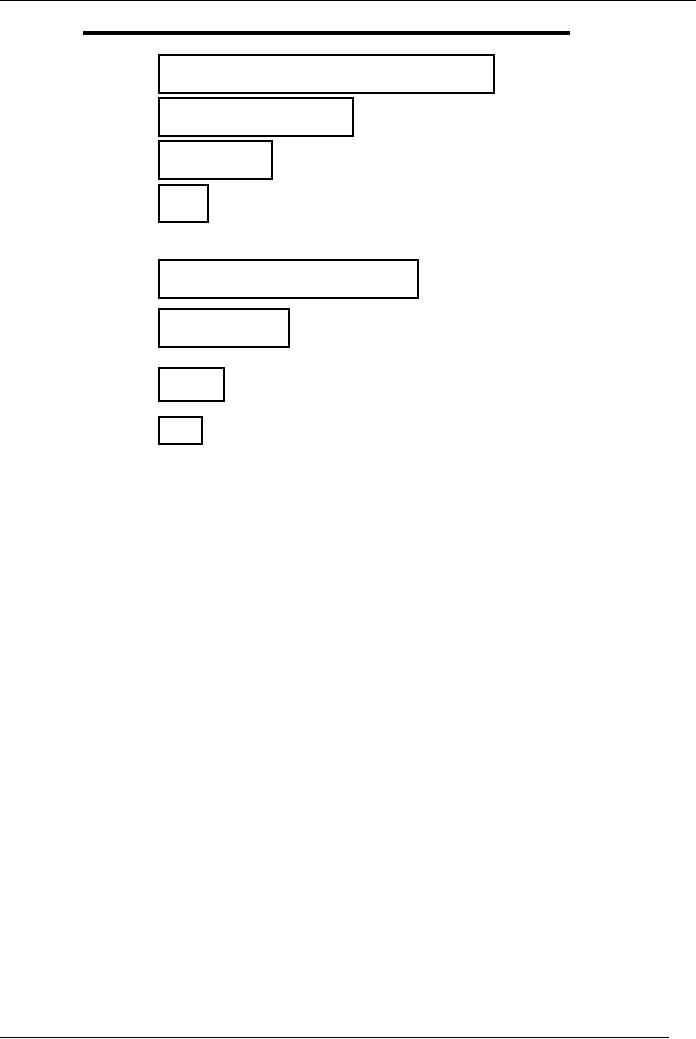 |

Advertising
and Promotion (MKT621)
VU
Lesson
22
IMPORTANT
TOOL OF ADVERTISING
OVERVIEW
In
this lecture continuing with
an important tool of advertising
i.e. magazines, we will explain
the
types of audience, advertising importance
of television advertising its
comparison with
other
media advantages and disadvantages including
the ingredients of a good TV
campaign,
forms
of TV advertising will be discussed.
Moreover another important
component of
electronic
media ratio will be discussed in detail
besides discussing Cable TV,
transit,
billboards
advertising will be explained.
TYPES
OF MAGAZINES:
It
is important to know different
types of audience. Primarily following
three different types
of
audience:
Consumers:
Directed
to consumers who buy
products for personal
consumption.
Business:
For
business readers
like:
a)
Trade papers
b)
Industrial magazines
c)
Professional magazines
Farm
Audience: Targets
farmers & those engaged in products
related to farming
TYPES
OF ADVERTISING:
There
are various types of
advertising in use today
like;
1.
OUT
DOOR or OUT OF HOME
ADVERTISING:
From
posters, bill boards to hot
air balloons.
2.
TRANSIT
ADVERTISING:
Generally
in urban areas like paint on
buses, taxis etc. both
inside & outside of these.
3.
DIRECTORIES:
Like
yellow pages, Trade
directories etc.
TELEVISION
ADVERTISING
This
source provides the ability to
communicate sight, sound,
motion and emotion, by
giving
product
"larger than life" image and
being visual has more
impact on customers. "Seeing
is
believing"
becomes reality and makes
easy for consumers to take
decision.
The
following chart compares
television to other media and its
over all superiority as
primary
media
source of news and proving as a credible
news source as illustrated as Chart
No. 24.
61

Advertising
and Promotion (MKT621)
VU
ADVANTAGE
OF TV TO OTHER MEDIA
TV
69%
37%
Newspapers
14%
Radio
5%
Magazines
(a)
Primary media source of
news
53%
TV
23%
Newspapers
Radio
7%
4%
Magazines
(b)
Credibility of news
sources
ADVANTAGES
OF TELEVISION ADVERTISING
Television
is rapidly becoming a very
strong medium of advertising
with global media
explosion
and the setting up of numerous TV
channels with in many cases
very large foot
print
(coverage
area). It is being used extensively by
all type of businesses, services
and
governments,
following are the advantages
of television advertising:
�
Creativity and Impact: The
greatest advantage of TV is the
opportunity it provides
for
presenting
the advertising message, the
blend of sight and sound
offers tremendous
creative
flexibility
and resultantly making deep
impact.
�
Coverage and cost effectiveness: Television
advertising makes it possible to reach
large
audience
nearly everyone regardless of
age, gender, income or
educational level
watches
TV
at least for sometime. In view of
the large coverage of its telecast
makes it more
effective
both for advertising and cost
effectiveness.
�
Captivity and attention: The
combined power of site,
sound, motion and emotion
creates a
very
good effect
�
Selectivity and flexibility: In TV
advertising some selectivity is possible
to due to
variations
in the composition of audiences as a
result of program content
time of telecast
and
geographical coverage.
LIMITATIONS
OF TELEVISION:
Despite
being advantages and unsurpassed
from creative perspective it still
has some
disadvantages
that limit its use by
many advertisers. These are as
follows:
�
Costs: It is enormously expensive
medium to advertise.
�
Lack of selectivity: TV doesn't
offer as much audience selectivity as
radio, magazine,
newspapers
or direct mail for reach
precise segment of the
market.
62

Advertising
and Promotion (MKT621)
VU
�
Fleeting message: Television
commercials usually last
from 30 seconds or less and
leave
nothing
tangible for the viewer to
examine or consider.
�
Clutter: The problem of
reading messages and shorter
commercials suggests that since
the
advertiser
message is only one or more
spots its results in
effectiveness because of
such
clutter.
�
Limited viewer attention:
Buying time on a TV program it
communicates a message to
large
number of customers yet
there is increasing evidence
that the size of viewing
audience
shrink
during a commercial break.
�
Deception in television
advertising: Art and technology is
being used to create
simulations
to
tell stories to evoke desired
reaction from the audience.
Basically a tantamount to say
what
is not actually true.
INGREDIENTS
OF A GOOD TV CAMPAIGN:
Television
is an influential medium of advertising
but making a good TV campaign
the creative
process
begins with our knowledge of
what works best for
television campaigns. The
consumers
respond best to television commercials
that employ one of the
following elements:
�
Celebrities.
�
Humor, especially a surprise or a
twist.
�
A story line.
�
A simple concept.
FORMS
OF TV ADVERTISING:
Various
techniques are used for
Television Advertising and following
are its different
forms.
SPONSORSHIPS:
Advertising
through sponsoring
programs
PARTICIPATIONS:
Frequent
spots 5, 10, 20, 30
seconds
SPOT
ANNOUNCEMENTS: Word spot
means with time frame
appear during breaks
etc.
RADIO
ADVERTISING:
Although
not as glamorous as TV yet it is
still effective and strong.
Following are the
advantages
of radio advertising:
ADVANTAGES:
�
Low cost option.
�
Definable target markets
based on their
format.
�
Radio stations offer considerable
flexibility & a short lead
time.
�
Intimacy like FM stations
etc, liking to presenters, DJ's
etc.
�
Mobile: Its portability
makes it mobile and can be taken
anywhere.
DISADVANTAGES
OF RADIO:
Radio
has its disadvantages too
which are given
below:
�
Short exposure time:
Radio advertisements normally
last only 15 or 30 seconds
and
listeners
busy with other activities
may not register
them.
�
Target duplication: Several
radio stations may try to
reach the same target market
and
advertising
on all of them may not be
financially feasible yet
reaching everyone in
that
target
market may not be possible
unless all stations are
used.
�
Overloading of ads: Normally
too much information is put
in one add thus
overloading
the
consumer mind and very
little is retain.
�
Loyal listenership: Radio
stations have loyal listener
who do not prefer to listen
to other
stations.
63

Advertising
and Promotion (MKT621)
VU
MEASURING
RADIO AUDIENCE:
�
Coverage:
The most basic measure is
the station coverage which is
simply the number of
homes
in a geographic area that
are able to pick up the
station clearly.
�
Circulation:
The circulation of the radio
station i.e. the number of
listeners listening to it
regularly.
�
Competing
programs: Competing programs also
provide a very good medium to
judged,
determine
and measure radio audience.
�
Timings
of programs: The timings of
programs are also crucial
for measuring the number
of
radio
audience.
CABLE
TV:
Cable
TV is now becoming very
popular source of advertising and it has
various advantages as
under:
ADVANTAGES:
�
Can buy time on programs
for specific
audiences
�
Cost is lower than normal
TV.
�
Production costs more
affordable.
�
More innovative production people
available.
�
Message reach assured
LIMITATIONS
OF CABLE TV:
There
are various disadvantages of cable TV
which limit its benefits
these are appended
below:
�
Limited or small
Reach.
�
May have less experienced
production crew.
�
Reaching specific customers,
but not potential
customers.
�
Audience may be fragmented and
viewers may stay with a
program for a shorter period
of
time.
TRANSIT
ADVERTISING:
Basically
Transit Advertising can be defining as a
source consisting of paper posters
placed
inside
or on transit vehicles and in transit
stations. following are the
advantages of transit
advertising
preceded by its disadvantages:
ADVANTAGES
�
Exposure to one ad can be long if
inside a transit
vehicle.
�
Frequency.
�
Ads outside the
transit vehicle are seen by
large & diverse audiences.
�
Ad message can be timely.
�
Method tends to be quite
inexpensive.
�
Ads could be somewhat
lifestyle targeted passing through
specific neighborhoods.
DISADVANTAGES
�
Ad design is usually limited to size of
space.
�
People on mass transit
are not generally in a
receptive mood.
�
Transit ads are hard
to target.
�
Surroundings may distract
from the message.
�
Mass transit environment may
not suit Message.
64

Advertising
and Promotion (MKT621)
VU
BILLBOARDS
ADVERTISING
Billboards
are now a days a very
important source of splashing
advertisements. These are
very
effective
as they are witnessed and observed by
many. Following are the
advantages followed
by
the disadvantages of billboards usage as
advertising medium.
ADVANTAGES
�
Big splashy messages
attract attention.
�
Ad has impact: technology
has made it more
interesting.
�
Ad reaches lot of people, as they
travel same route every
day.
DISADVANTAGES
OF BILL BOARDS
�
Hard to reach specific
audience.
�
Creativity inhibited by space
limitations.
�
Hard to measure its
effectiveness.
�
Ad may become weathered &
vandalized.
�
Costs though reasonable
could become quite expensive
by innovative adaptations.
65
Table of Contents:
- INTRODUCTION TO ADVERTISING:Its growing importance, Explanation of Personal and non-personal selling
- INTRODUCTION TO ADVERTISING:ADVANTAGES, Communication, Information, Various Media
- INTRODUCTION TO ADVERTISING:FUNCTIONS OF ADVERTISING, IMPACT OF ADVERTISING
- ADVERTISING AND SOCIETY:PRACTICAL BENEFITS, ETHICS IN ADVERTISING, Marketplace & Market space
- MARKETING TOOLS:COMPONENTS OF MARKETING MIX, PRODUCT LIFE CYCLE (PLC) CURVE
- MARKETING TOOLS:SWOT Analysis, Contents & Structure, ROLE & FUNCTION OF ADVERTISING
- ROLE AND FUNCTIONS OF ADVERTISING:Structure of an Advertising Agency, How to Select an Advertising Agency
- ADVERTISING PLANNING:ADVERTISING OBJECTIVES, Types of Advertising, Positioning Strategies
- POSITIONING:BRANDING, 7 Steps of Creative Process, UNIVERSAL ADVERTISING STANDARDS
- ADVERTISING MESSAGE:Message Content, BASIC TERMS & CONCEPTS
- ADVERTISING BUDGET:4 Methods to determine, ADVERTISING RESEARCH, ADVERTISING RESEARCH
- ADVERTISING REACH:BROAD COMMUNICATION OBJECTIVES, ADVERTISING COPY METHODS, MEDIA RESEARCH
- PRE – PLACEMENT EVALUATION:ACCOUNT PLANNING, MARKET, COMPETITION
- WORKING OF ADVERTISING:12 Steps to develop effective campaign, SOURCE or THE ADVERTISER
- ADVERTISING RESPONSE HIERARCHY MODELS:AIDA MODEL, PROCESS REQUIRED TO GET BIG IDEA
- PROBLEM SOLVING STRATEGIES:Procedure to Handle Problems, In brief, Eight principles apply to consumer behavior
- CONSUMER BEHAVIOUR:ADVERTISING APEALS, MEDIA MIX DECISIONS, Target Rating Point (TRP)
- CREATIVITY IN ADVERTISING:Three aspects are most accepted, Four Rules of Creativity
- COPY WRITER:CHARACTERISTICS OF COPYWRITER, IMPORTANCE OF LANGUAGE
- WHY ADVERTISING:Advertising & Market Education, ADVERTISEMENT CAMPAIGNS
- METHODS TO APPRECIATE A PROBLEM:SPONSORSHIP—an important tool, Special Characteristics
- IMPORTANT TOOL OF ADVERTISING:TELEVISION ADVERTISING, TRANSIT ADVERTISING
- ONLINE ADVERTISING:Banners, Logos, Email Ads, Keywords on Search Engines, New Developments
- ONLINE ADVERTISING:Structural Challenges, Adobe Photoshop, JAVA, HTML, DHTML, ASP & JSP
- SALES PROMOTION:Consumer Oriented Promotion, HOW TO USE TRADE PROMOTION, Dealing with the Trade
- PUBLICITY:PERSONAL SELLING, ROLE OF SALES PERSON, FUTURE OF GLOBAL ADVERTISING
- MARKETING ENVIRONMENT:Competitors, The Target Buyer, Segmenting your Market, FUTURE OF MARKET GROWTH
- MARKETING PLAN:Situational Analysis, Macro – Environment Situation, Marketing Objectives, Financial Objectives
- MARKETING PLAN:PROMOTING BUSINESS IN LOW COST, SUPPLY CHAIN, BUYER IDENTIFICATION
- HOW TO BE GOOD CLIENTS:CHANNEL BUYERS, HOW TO BE GOOD CLIENTS 14 RULES
- CLIENT – AGENCY RELATIONSHIP:HOW TO KEEP CLIENTS (10 Ways), Three Points for Consideration
- CLIENT – AGENCY RELATIONSHIP:ADVERTISING WITHOUT AN AGENCY, LOGO AND CORPORATE IDENTITY
- NEWSPAPER ADVERTISING:AD PRODUCTION,TYPES OF NEWSPAPER ADS, CIRCULATION
- OTHER ADVERTISING MEDIUM:HOW TO USE MAGAZINES, HOW TO USE RADIO, Daypart buying options
- UTILITY OF VARIOUS MEDIA:TAPE OR FILM, UTILITY OF TV, DIRECT MAIL PACKAGE
- OTHER ADVERTISING MEDIA:POINT OF PURCHASE (POP), TRANSIT ADVERTISING, LIMITS OF ADVERTISING
- CONTINUOUS TRACKING:PLANNING CAMPAIGN, HOW TO UNDERSTAND ADS, ASK BASIC QUESTIONS
- SEASONAL ADVERTISING:MAXIMIZING IMPACT, THE WEB ADVERTISING, MEASURING ADVERTISING
- COMPONENTS OF ADVERTISING:BUY - OLOGY OF MIND, BUY - OLOGY OF MIND
- CRITICISM ON ADVERTISING:SHOULD ADVERTISING BE ABOLISHED,
- EFFECT OF ADVERTISING:HOW TO PROMPT AWARENESS, CREATING DESIGN THAT SELLS
- CREATING EFFECTIVE DESIGN:LANGUAGE OF TYPOGRAPHY, HEADLINES THAT COMMUNICATE
- WORKSHEETS:DEMOGRAPHICS OF YOUR TARGET, YOUR COMPETITOR
- GLOSSARY OF ADVERTISING:ACCOUNT EXECUTIVE, PROOF, VOICE OVER
- CONCEPT OF AN AD:HOW TO DEVELOP A CONCEPT OF AN AD